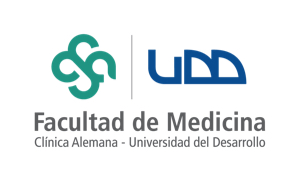Asociación entre el biotipo facial y la clase esqueletal en pacientes entre 11 y 30 años atendidos en la Clínica de especialidades de ortodoncia UDD entre los años 2015 y 2020
DOI:
https://doi.org/10.52611/confluencia.2024.1133Keywords:
Facial biotype, Skeletal class, Cephalometric analysis, Ricketts cephalometryAbstract
Introduction: In orthodontics, concordance between skeletal class and facial biotype is important to establish a good diagnosis and treatment, in order to correct problems of esthetics, mandibular dynamics and malocclusions. Objectives: To evaluate the association between facial biotype and skeletal class in Chilean patients aged 11 to 30 years who were seen at the orthodontic specialty clinic of the UDD. Methodology: A cross-sectional study was carried out analyzing the association between facial biotype and skeletal class of patients seen at the CESP. A descriptive analysis of the absolute and relative frequencies of the different categories and their combinations was performed. The statistical association was determined through the X2 test. Results: 290 participants were included, 55.5% female, with a mean age of 19.6 years. The most prevalent biotype was dolichofacial and the skeletal class was class II. As for the association 67 patients were class II and dolichofacial, being the most frequent association. A 57.24 % did not present concordance. Discussion: Normality based on facial biotype and skeletal class was not predominant, this is related to malocclusion, esthetic and TMD problems. Interceptive therapy and orthognathic surgery are options to treat dentomaxillary anomalies depending on factors such as age and severity of the condition. Conclusion: 57.24% of the population does not present a concordance between facial biotype and skeletal class, so a correct diagnosis, planning and treatment plan are essential to obtain favorable results.
Downloads
References
Ghodasra R, Brizuela M. Orthodontics, Malocclusion. StatPearls [Internet]. 2023 [citado el 4 de junio 2024]. Disponible en: https://www.ncbi.nlm.nih.gov/books/NBK592395/
Ghodasra R, Brizuela M. Orthodontics, Cephalometric Analysis. StatPearls [Internet]. 2023 [citado el 4 de junio 2024]. Disponible en: https://www.ncbi.nlm.nih.gov/books/NBK594272/
Rica C, Cubillo B, Benavides JB, Smith J. Principales análisis cefalométricos utilizados para el diagnóstico ortodóntico. Rev Cient Odontol [Internet]. 2006 [citado el 13 de mayo 2024];2(1):11-27. Disponible en: https://www.redalyc.org/articulo.oa?id=324227905005
Cerda-Peralta B, Schulz-Rosales R, López-Garrido J, Romo-Ormazabal F, Cerda-Peralta B, Schulz-Rosales R, et al. Parámetros cefalométricos para determinar biotipo facial en adultos chilenos. Rev. Clin. Periodoncia Implantol. Rehabil. Oral [Internet]. 2019 [citado el 4 de junio 2024];12(1):8-11. Disponible en: http://dx.doi.org/10.4067/S0719-01072019000100008
Medina-Grandez AF, Llontop-Palma L, Ruíz-Mora GA, Rodríguez-Cárdenas YA, Aliaga-Del Castillo A, Dutra V, et al. Concordance of the facial biotype between Bjork-Jarabak cephalometrics and photographic analysis of the facial opening angle. J Clin Exp Dent [Internet]. 2023 [citado el 4 de junio 2024];15(6):e454. Disponible en: https://doi.org/10.4317/jced.60506
Ricketts RM. Planning Treatment on the Basis of the Facial Pattern and an Estimate of Its Growth. Angle Orthod [Internet]. 1957 [citado el 4 de junio 2024];27(1):14-37. Disponible en: https://doi.org/10.1043/0003-3219(1957)027<0014:PTOTBO>2.0.CO
Mortada AA, Burhan AS, Hajeer MY, Nawaya FR, Sahtout GF. Do the Most Attractive Faces of Patients With Class II Division 1 Malocclusion Differ From Those With the Least Attractive Faces in Terms of Angular and Proportional Measurements Assessed on Frontal and Lateral Photographs? Cureus [Internet]. 2023 [citado el 4 de junio 2024];15(1):e33455. Disponible en: https://doi.org/10.7759/cureus.33455
Dimberg L, Arnrup K, Bondemark L. The impact of malocclusion on the quality of life among children and adolescents: a systematic review of quantitative studies. Eur J Orthod [Internet]. 2015 Jun 1 [citado el 4 de junio 2024];37(3):238-47. Disponible en: https://doi.org/10.1093/ejo/cju046
Ballero Llaneza S. Asociación entre clase esqueletal y biotipo facial en pacientes con trastornos temporomandibulares examinados en el Postítulo de Ortodoncia y Ortopedia Dento Maxilo Facial de la FOUCH en el año 2016. 2018 [Internet]. Santiago: Universidad de Chile; 2018 [citado el 6 de junio 2024]. Disponible en: https://repositorio.uchile.cl/handle/2250/148620
Mangla R, Singh N, Dua V, Padmanabhan P, Khanna M. Evaluation of mandibular morphology in different facial types. Contemp Clin Dent [Internet]. 2011 [citado el 9 de junio 2024];2(3):200-6. Disponible en: https://doi.org/10.4103/0976-237x.86458
Arnett GW, Bergman RT. Facial keys to orthodontic diagnosis and treatment planning. Part I. Am J Orthod Dentofacial Orthop [Internet]. 1993 [citado el 9 de junio 2024];103(4):299-312. Disponible en: https://doi.org/10.1016/0889-5406(93)70010-l
Lone IM, Zohud O, Midlej K, Proff P, Watted N, Iraqi FA. Skeletal Class II Malocclusion: From Clinical Treatment Strategies to the Roadmap in Identifying the Genetic Bases of Development in Humans with the Support of the Collaborative Cross Mouse Population. J Clin Med [Internet]. 2023 [citado el 9 de junio 2024];12(15):5148. Disponible en: https://doi.org/10.3390/jcm12155148
Pacheco Rodríguez GN, Armijos Dávila AA, Armijos Dávila MP. Beneficios de la implementación de ortodoncia interceptiva. RECIAMUC [Internet]. 2022 [citado el 6 de junio 2024];6(2):69-78. Disponible en: https://doi.org/10.26820/reciamuc/6.(2).mayo.2022.69-78
Carrasco-Sierra M, Mendoza-Castro AM, Andrade-Vera FM. Implementación de la ortodoncia interceptiva. Dom Cienc [Internet]. 2018 [citado el 6 de junio 2024];4(1):332-40. Disponible en: https://doi.org/10.23857/dc.v4i1.745
Bedolla-Gaxiola HA, Garrigós-Esparza D, Hernández-Cabanillas JC, Rosales-Berber MÁ, Pozos-Guillén A, Garrocho-Rangel JA. Quick correction of a skeletal class III maloclussion in primary dentition with face mask plus rapid maxillary expansion therapy. Odovtos [Internet]. 2018 [citado el 9 de junio 2024];20(2):31-7. Disponible en: http://dx.doi.org/10.15517/ijds.v0i0.32381
Zere E, Chaudhari PK, Sharan J, Dhingra K, Tiwari N. Developing Class III malocclusions: challenges and solutions. Clin Cosmet Investig Dent [Internet]. 2018 [citado el 9 de junio 2024];10:99-116. Disponible en: https://doi.org/10.2147/ccide.s134303
Braga S, Martins T, Vogel C, Bastos M, Vieira M, Braga E. Evaluation of anteroposterior and vertical stability 25 years after Angle class II division 1 treatment with cervical headgear. J Orofac Orthop [Internet]. 2021 [citado el 9 de junio 2024];82(6):382-90. Disponible en: https://doi.org/10.1007/s00056-020-00277-9
Downloads
Published
How to Cite
Issue
Section
License
Copyright (c) 2024 Revista Confluencia

This work is licensed under a Creative Commons Attribution-NonCommercial-NoDerivatives 4.0 International License.






